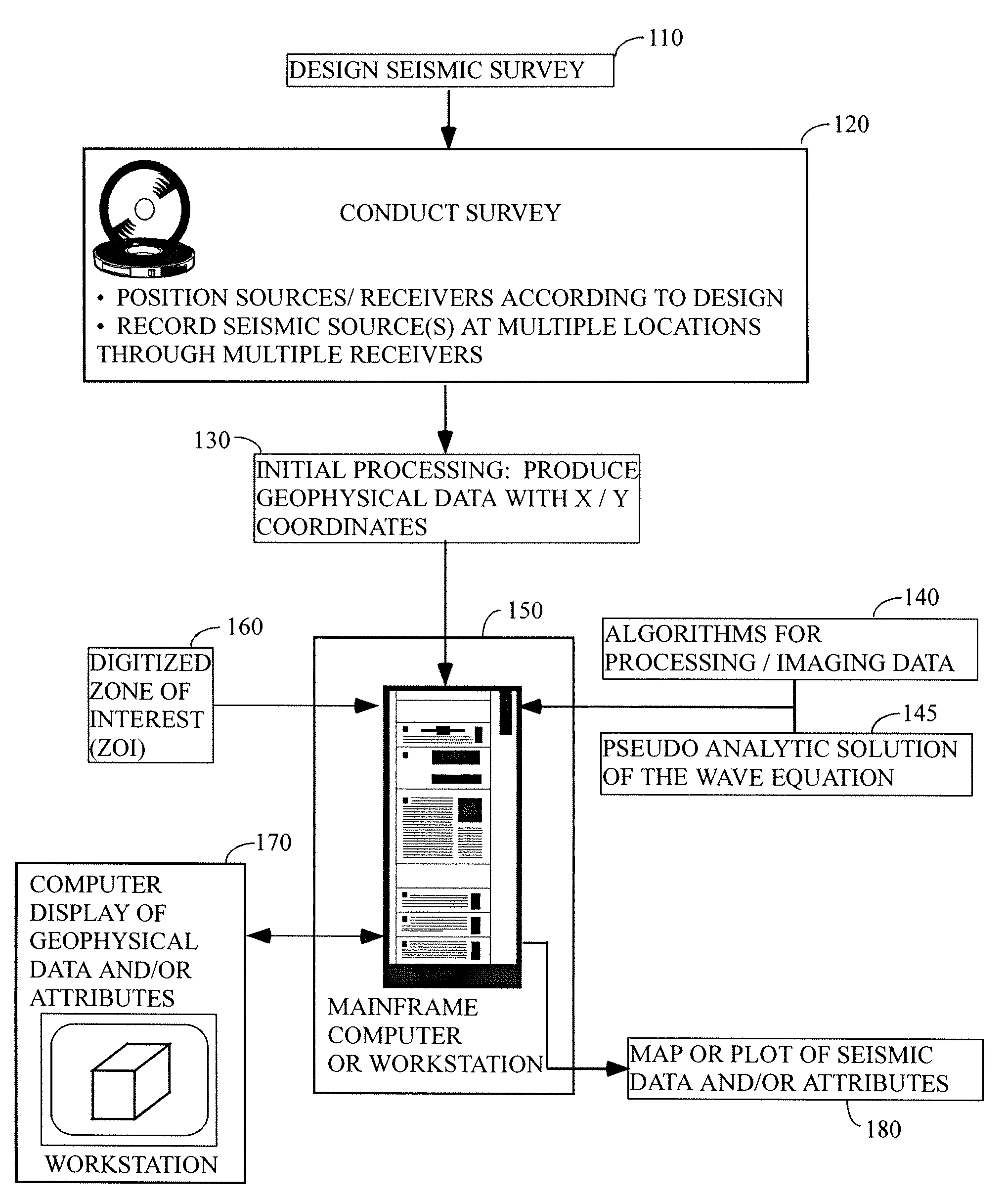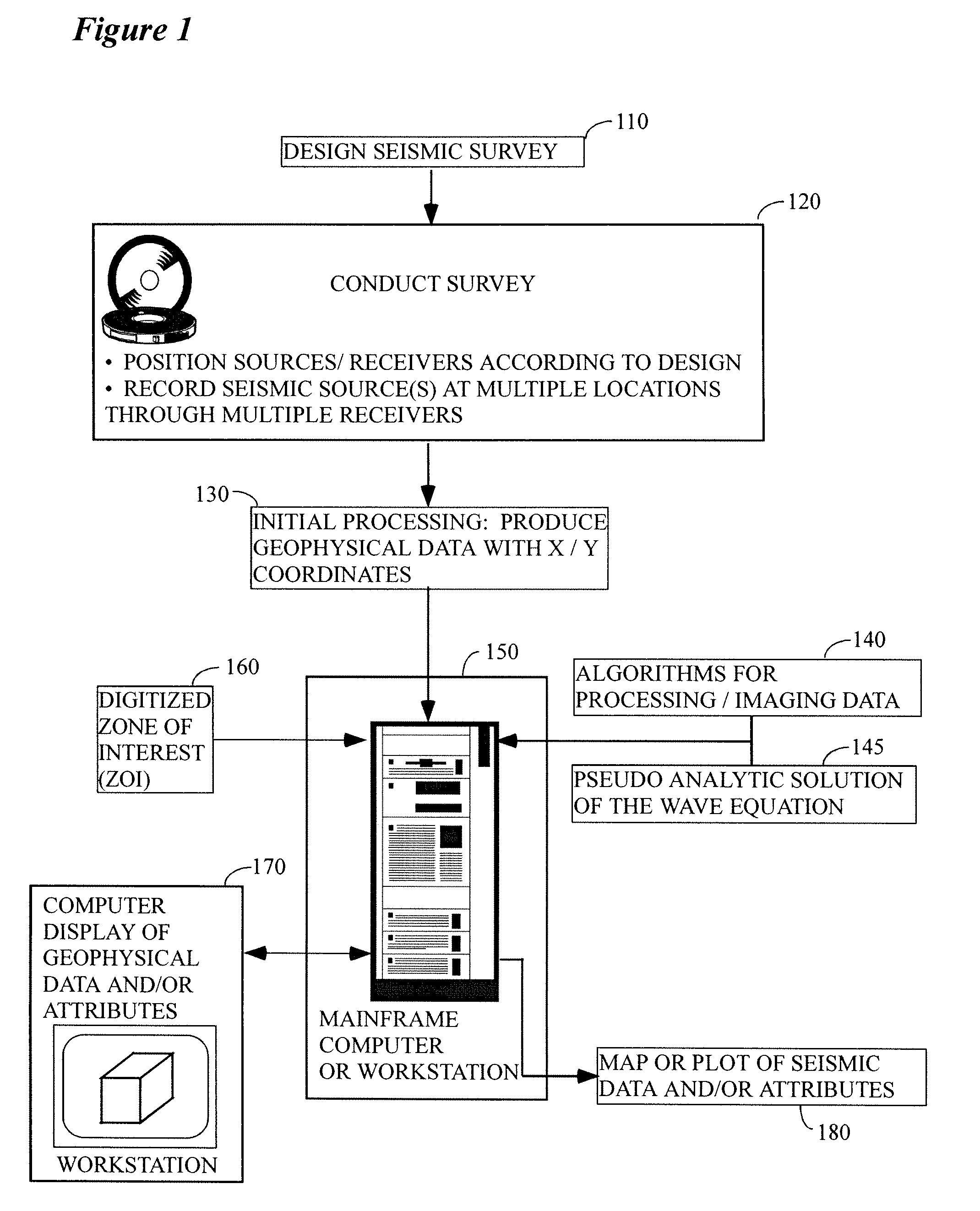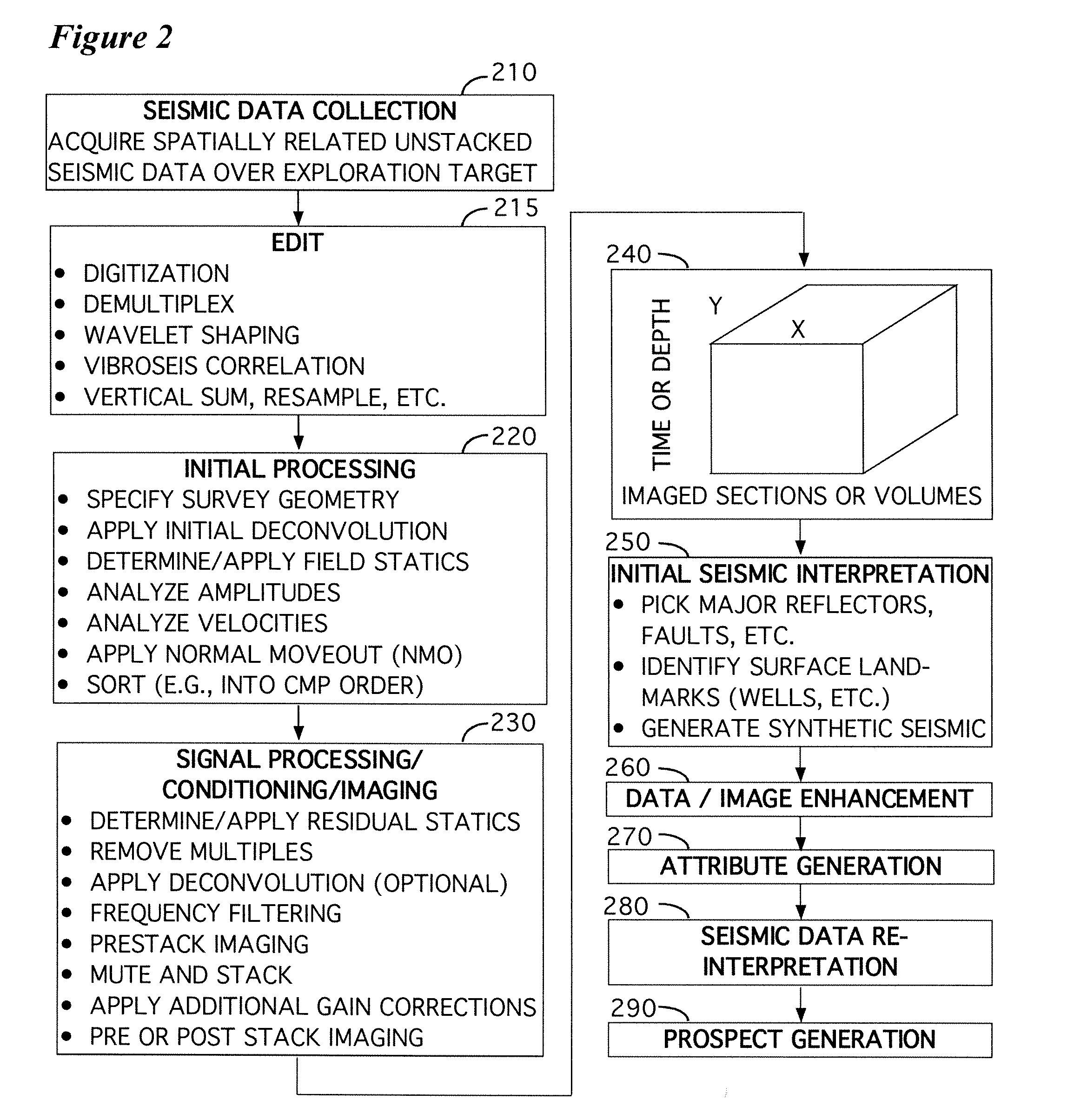Pseudo-analytical method for the solution of wave equations
a wave equation and analytical method technology, applied in the field of geophysical subsurface imaging, can solve the problems of increased computational cost, high memory use, and high computational cost, and achieve the effects of high accuracy, easy interpolation, and improved accuracy
- Summary
- Abstract
- Description
- Claims
- Application Information
AI Technical Summary
Benefits of technology
Problems solved by technology
Method used
Image
Examples
Embodiment Construction
[0021]While the inventive system and methods have been described and illustrated herein by reference to certain preferred embodiments in relation to the drawings attached hereto, various changes and further modifications, apart from those shown or suggested herein, may be made therein by those skilled in the art, without departing from the spirit of the inventive concept, the scope of which is to be determined by the following claims.
General Environment of the Invention
[0022]FIG. 1 illustrates the general environment in which the instant invention would typically be used. As a first step, a seismic survey will be designed (step 110), wherein the survey geometry, sample rate, number of sources / receivers, etc. would typically be selected in order to image a preferred subsurface target. Among the many parameters that might be considered in formulating the survey design are:[0023]the surface area to be covered by the survey;[0024]whether the survey will be conducted on land, offshore, o...
PUM
 Login to View More
Login to View More Abstract
Description
Claims
Application Information
 Login to View More
Login to View More - R&D
- Intellectual Property
- Life Sciences
- Materials
- Tech Scout
- Unparalleled Data Quality
- Higher Quality Content
- 60% Fewer Hallucinations
Browse by: Latest US Patents, China's latest patents, Technical Efficacy Thesaurus, Application Domain, Technology Topic, Popular Technical Reports.
© 2025 PatSnap. All rights reserved.Legal|Privacy policy|Modern Slavery Act Transparency Statement|Sitemap|About US| Contact US: help@patsnap.com



